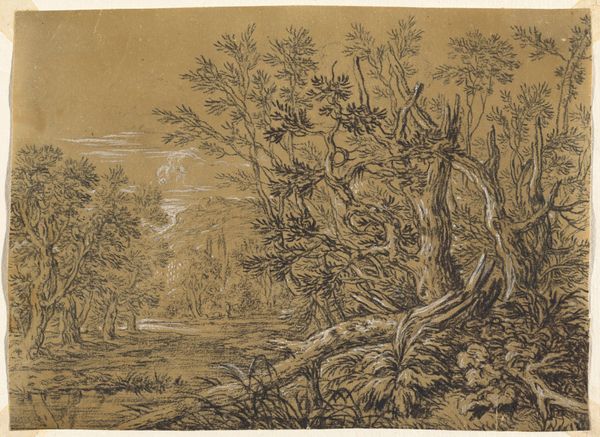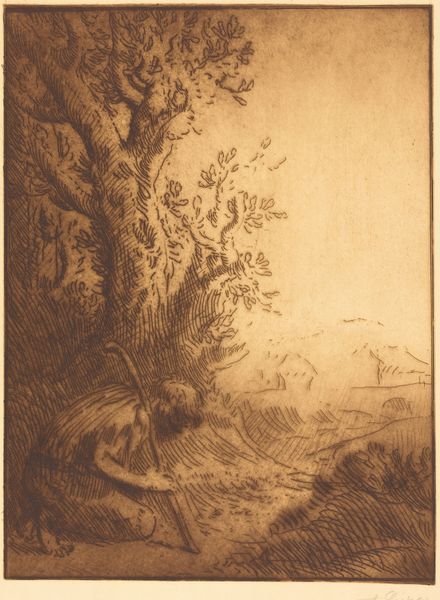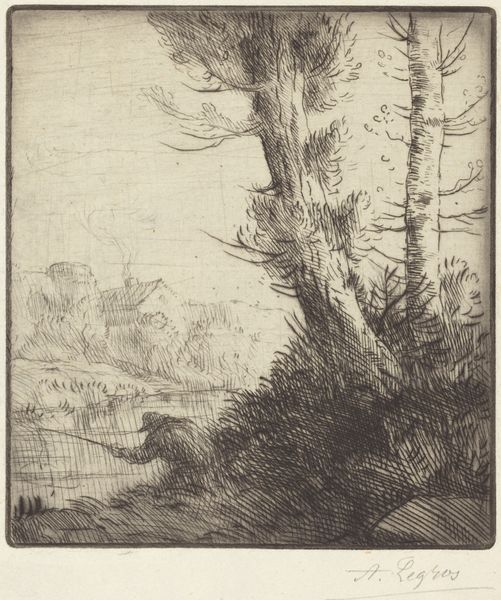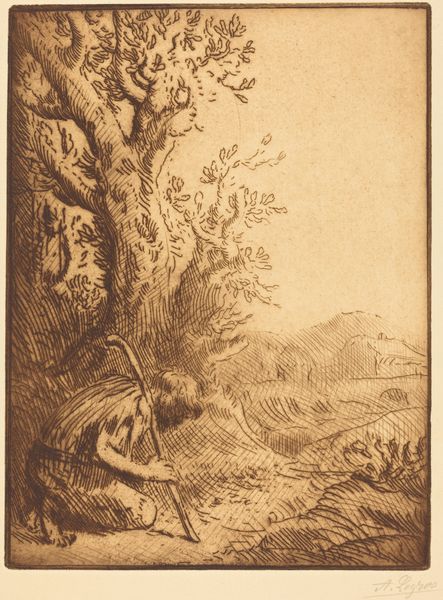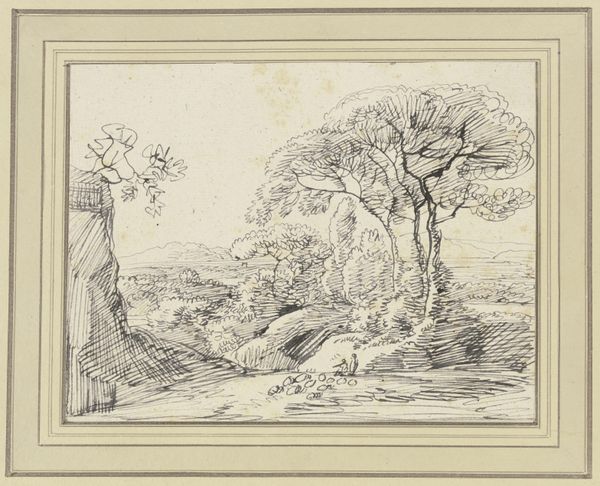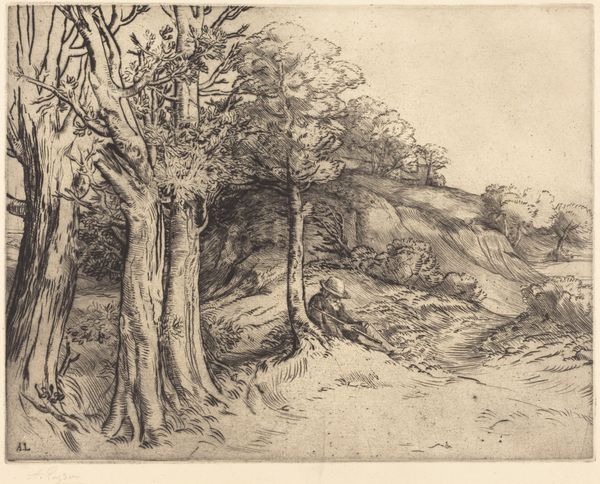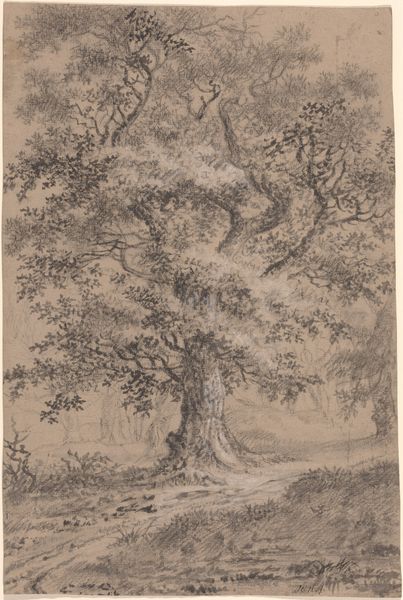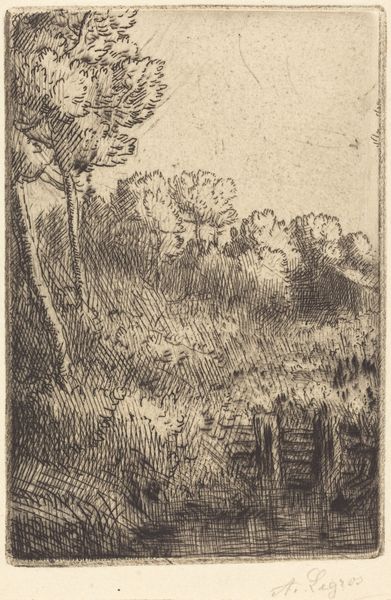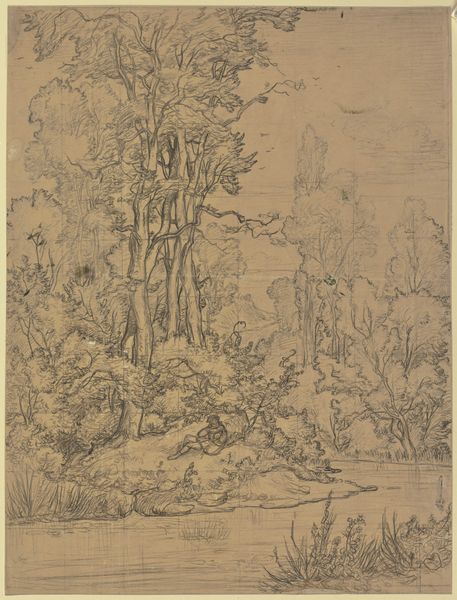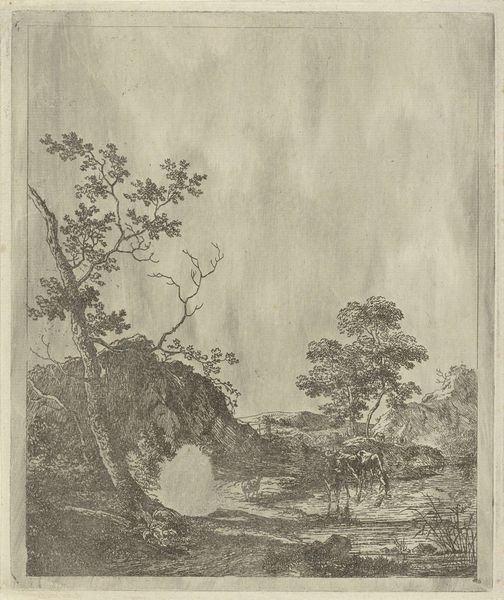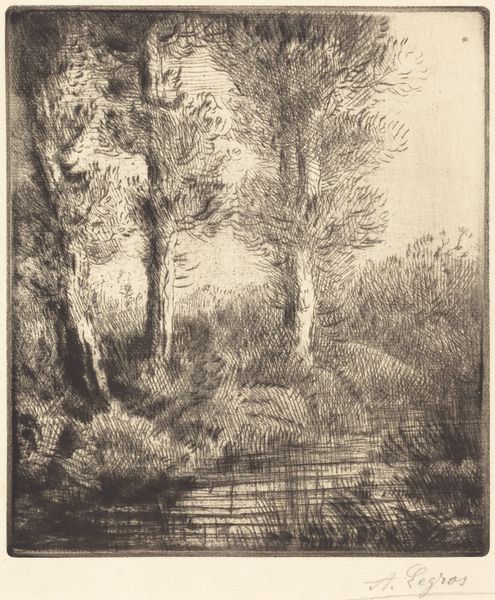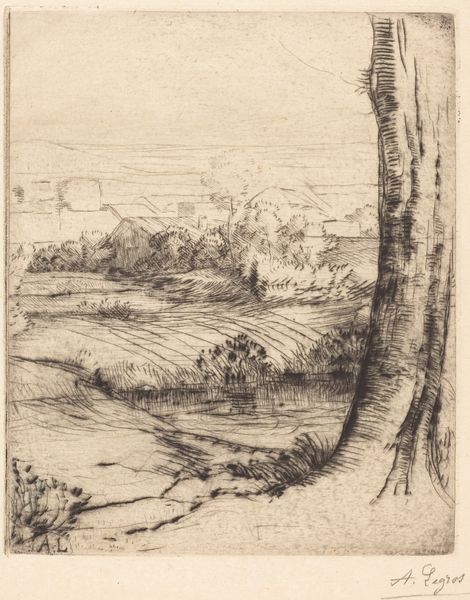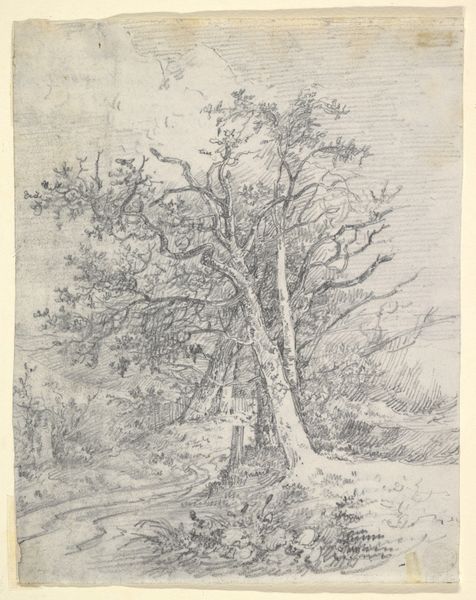
print, etching
# print
#
etching
#
landscape
#
line
#
genre-painting
#
realism
Copyright: National Gallery of Art: CC0 1.0
Curator: Alphonse Legros' etching, "Siesta in the Country," pulls us into a moment of rural tranquility. There's an immediate serenity to it. What's your take on the composition? Editor: It feels intensely private, almost voyeuristic. The slumbering figure dominates the foreground, yet they're dwarfed by the looming trees. I'm drawn to how the stark lines carve out a social narrative of labor and rest. Legros made this. When and where do you think this was created, what sort of impact may the local cultural climate had? Curator: The lack of specific dating is actually intriguing. The piece resists a clear historical tethering, which, in turn, invites us to situate it within broader sociopolitical narratives surrounding rural life, particularly its often-overlooked laborers and their relation to time. Editor: The art’s public role, it seems, plays with its ability to resonate across time. I wonder, for example, how the act of sleep in art can be viewed. The work could have social meanings as a critique of labor practices or perhaps, the value of respite in a culture of industry, maybe. Curator: Exactly! This piece prompts vital discussions about work, privilege, and leisure through a very specific visual register: etched lines mapping a social scene. What I love here is how Legros asks us to actively decode his visual grammar through class. Editor: And there is a powerful symbolism. While realism directs the viewer towards reality, it also pushes for a closer view of this laborer who could also represent all rural agricultural figures across time. Is Legros aware, or even actively representing, this, though? It is hard to gauge the intent, if there is any! Curator: Absolutely, we must avoid romanticizing a potentially exploitative structure. But, returning to a focus on affect: the artist presents his figure peacefully, and one may argue that this, in turn, validates this way of living for at least some of its constituents. In either case, the act of etching can serve to remind us of those frequently denied the pleasure of such simple acts. Editor: Indeed, thank you. Viewing this etching and the art world contexts surrounding it highlights what matters in cultural reflection and discourse. Curator: Precisely, reflecting on images, and where to place them in terms of significance. Thank you for exploring that scene with me.
Comments
No comments
Be the first to comment and join the conversation on the ultimate creative platform.
